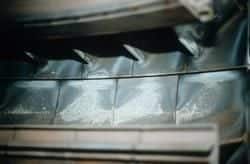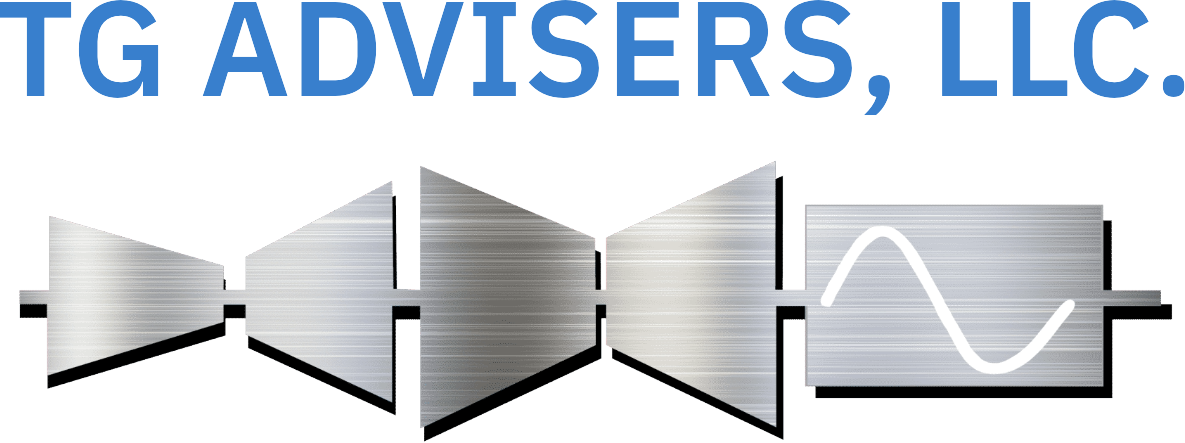Establishing combustion turbine blade and vane refurbishment intervals
As published in Energy-Tech Magazine:
By Stephen R. Reid, P.E., TG Advisers Inc.
Combustion turbine blade maintenance and refurbishment intervals must take into account many design and operation specific factors. Combustion Turbine Hot Section blades and vanes are subject to a number of damage and failure mechanisms, as noted here.
Most common failure mechanisms
- Creep – steady stress at elevated temperatures (base load concern)
- High Cycle Fatigue – blade vibration
- Thermal Mechanical Fatigue – combination of thermal and mechanical fatigue loading (low-cycle fatigue)
- Foreign/Domestic Object Damage
- Oxidation – elevated temperature exposure
- Hot Corrosion – temperature and fuel environment related
- Microstructural – aging, embrittlement
Establishing an effective inspection interval based on a combination of the damage mechanisms noted above can be challenging. There can be a fine line between premature scrapping of parts and forced outages due to non-conservative design and operating assumptions. As operating experience is accumulated, damage signatures can help establish the types of mechanism that are present on a specific row under specific operating regimes. These, in turn, can help establish refinements in maintenance intervals for blade refurbishment. Some examples of common damage mechanism are noted throughout this article.
Figure 1 illustrates stationary vane and surface oxidation damage from high temperature exposure.
Upgrades in vane coating technology could be one consideration for extended maintenance intervals on these parts. The root cause for the cracking illustrated in Figure 2 was determined to be thermal mechanical fatigue. Upgrades in materials might be a consideration for extending TMF life, since these vanes are replaced with new parts.
In other cases, unexpected vibration might be present in a unit and cause catastrophic failure of a rotating blade before it reaches its normal refurbishment schedule. An example of a combustion turbine blade root high cycle fatigue failure is shown in Figure 3. These types of failures are rare and typically are associated with generic/fleet design issues and/or an operational excursion that ultimately results in vibratory stresses that exceed the material’s endurance limit. The root cause of the failure in Figure 3 was determined to be an unstalled flutter condition that occurred at high mass flows on freestanding blades with detrimental blade-to-blade frequency relationships. This issue was eventually addressed by the OEM with a new design blade, with blade to first mode natural frequency separation.
Maintenance and refurbishment interval calculations
A number of industrial sized combustion turbine OEMs have developed an equivalent operating hours (EOH) formula to provide guidance for establishing intervals for blade path refurbishment. In the most simplistic form, the EOH formulas include the following factors:
- Tracking of normal operating hours
- Equating the number of starts to an hour equivalent with a time multiplier
- Equating the number of full load trips with a time multiplier
- Peak load operating hour multiplier
EOH formulas that are OEM specific can produce significant variations in refurbishment intervals depending on operating strategies. An example calculation using an EOH formula could produce an EOH of approximately 22,000 hours for a unit that has been operating at baseload for three years.
Using the same EOH formula for a cycling unit, an EOH of ~ 38,000 hours was calculated. The example illustrates how the damage mechanisms of a base-loaded application are normally very different from a unit that has start/stop cycles.
However, it should be noted that in many cases, cycling and operating hour damage do not occur in the same component locations, and are not additive as the EOH formula suggests. This is why some OEMs have adopted intervals based on total cycles or total operating hours, whichever comes first.
In fact, to take this example one step further, a power producer might have the same design unit at two locations that operate in cycling mode in one location and is base loaded in the other. After some operating time, the cycling mode blades might have significant creep life remaining. It would therefore be possible for a blade from the cycling unit to perform reliably in the base loaded unit for some economically significant additional time interval. Leveraging a pool of similar blades with different duty cycle exposure might provide an opportunity to reduce the pool of end of life blades.
The elapsed EOH life determination would not provide that opportunity.
Going forward
Blade and vane replacement costs can make up a large percentage of a plant’s operating and maintenance budget for major CT overhauls. Performing a thorough evaluation of the failure mechanisms that result in blade and vane replacement, and an assessment of the accuracy of the maintenance interval recommendation provided by the OEM might provide an opportunity to refurbish rather than replace. Issues with hot corrosion and oxidation might be reduced by use of coatings with better resistance to these mechanisms. Thermal barrier coatings might be a way to reduce parent material creep damage. Blades that have limited cycling life might operate reliably in base-loaded applications.
Taking a proactive approach to manage part life and refinement of the predictive refurbishment interval process can ultimately reduce the cost of the number of parts requiring replacement.
Destructive evaluation of parts at or near the end of their life can be very revealing. Vane/blade metallurgical sectioning for accelerated creep life analysis, determination of tensile properties and coating effectiveness can yield significant knowledge that will help refine intervals and opportunities for extended part operating life.


